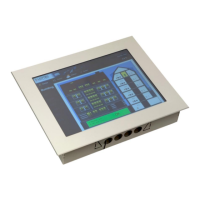L-VIS User Manual 142 LOYTEC
Version 6.2 LOYTEC electronics GmbH
[user:password]: Credentials used for authentication. If specified, a @ character
separates the credentials from the camera address.
<address>: IP address or DNS name of the camera.
[/path]: Additional path component, used to specify the type of video stream to
access. Most cameras provide access to predefined, or user defined streams under
different path names. However, there is no standard and every vendor does it
differently. See below for ways to determine a suitable path for your camera.
[?options]: Optional stream attributes to further specify the video properties.
The option part is separated from the path by a ? character. Individual options
consist of an option name and usually a value, for example videocodec=h264.
Multiple options are separated by a & character. Available options depend on the
camera model and the type of stream being configured.
Here are some examples for Axis cameras:
Protocol RTSP, video codec H.264, resolution 320x240, 12 frames/sec:
rtsp://admin:admin@192.168.19.3/onvif-
media/media.amp?resolution=320x240&fps=12&videocodec=h264
Protocol HTTP, MJPEG video, 320x240, 24 frames/sec:
http://192.168.19.3/mjpg/1/video.mjpg?resolution=320x240&compression=30&fps=
24&videocodec=jpeg
To determine valid path and option settings for your particular camera model, the camera
web interface often provides a way to configure a stream and see the resulting URL in the
stream preview window opened by the web browser. Another possibility is to check the
manual that came with the camera, or the vendor’s web site. There are also a number of
large camera URL directories online, which may list the URL and options for the desired
camera. If everything else fails, customer support of the camera vendor will be able to
provide the required data.
9.5.14.4 Runtime Control
Since a webcam control supports multiple cameras, data points can be attached to the
control to change the active camera during run time and retrieve information about the
camera which is currently viewed. The following data point types may be connected:
Simple analog or multi state inputs: The received value will be used to set the
active camera. The first camera in the list is camera 1. Values of zero or less will
turn playback off, while values larger than the highest camera number will
activate automatic cycling through all cameras.
Simple analog or multi state outputs: These types of output data points will
receive the number of the currently active camera. When playback is off, the
assigned value will be zero. When auto-cycle is active, a new camera number
will be assigned every time the active camera changes.
String outputs: String data points can be connected as outputs only. These data
points will receive the name of the currently active camera. When playback is
off, an empty string will be assigned. When auto-cycle is active, a new camera
name will be assigned every time the active camera changes.
The control will disconnect from the active camera and try to establish a connection to the
new camera as soon as it receives an update from a connected input data point. However, it
will update the connected outputs only after the connection was established and the video

